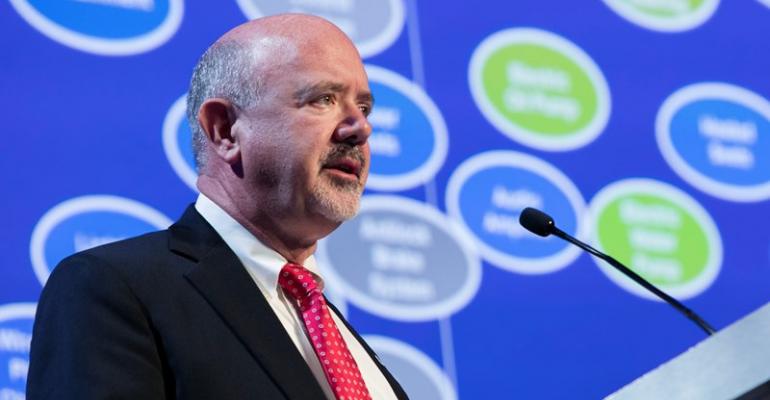TRAVERSE CITY – Consumer demand for electrified vehicles will reach a tipping point in about 10 years, with 48V systems leading the way, according to global battery supplier Johnson Controls.
Coming 48V electrification will fill the large gap between 12V and high-voltage systems used in battery-electric vehicles and hybrids, says Tom Watson, Johnson Controls vice president and technical fellow-powertrain vehicle systems.
While automotive electrical networks have managed with 12V power since the 1950s, Watson notes demands of today’s increasingly complex onboard systems can at times exceed the capacity of the vehicle’s alternator.
As a result, many automakers are switching from traditional lead-acid batteries to absorbent glass mat (AGM) batteries that can withstand the cycling and deep-discharge load-management demands of the vehicle as well as power stop/start and other engine-management systems.
“Continued increases in loads, including things like automated driving, will require vehicles to increase voltage beyond 12 volts,” says Watson. “In just the next eight years, we’ll see 48V reaching, at a minimum, a 13% share of new-vehicle sales and potentially as high as 18%.”
Watson says 48V systems are cost effective and provide significant engineering savings by enabling electrically powered superchargers and engine controls, including valvetrains, while still powering onboard 12V systems.
“It provides the power needed for the features consumers demand and a 12% to 15% fuel-economy gain as well,” he says. It provides “basically 80% of the benefits of a full hybrid at about 50% of the cost. We really think there’s an opportunity…to focus on 48V systems to drive a large amount of CO2 reductions for the fleets.”
At the same time, traditional lead-acid batteries aren’t going away, with demand expected to grow through 2030, he says.
[email protected] @bobgritzinger





